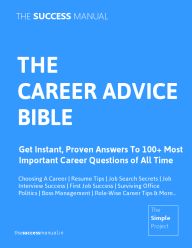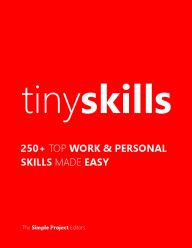On February 16, 2025 By thesuccessmanual Topic: Handbook, Elearning, Instructional design, Simpleguide
E-learning, basically, using electronic tools to teach is a growing business. You can divide it into two parts - part 1 deals with instructional design, which means structuring your teaching - part 2 deals with the tools and approaches used to put that teaching into an electronic medium - websites, mobile devices, etc.
Introduction to e-learning and instructional design:
Wikipedia has the best introductions to e-learning and instructional design.
The other two best introductory links to the subject are this by Tom Kuhlman of Articulate (a PowerPoint-like software used to create e-learning projects), and here by the folks at Kineo, an e-learning outfit.
This is also a very useful primer to Instructional Design ideas.
Uses of E-learning
Besides the education sector - students in colleges and schools (and anyone outside of the system), the corporate sector is where the money is. Here, you will get to use various tools (you already know about Powerpoint, Articulate) to create things like these - Job aids, internal training courses, tutorials, testing knowledge of employees, compliance training, demonstration of a process, DVD-based courseware, new hire orientation program, story-based training, game-based e-learning (this is also a hot area in the field of e-learning), simulations (kind of virtual reality - virtual tours etc.), product training modules, etc.
E-learning is everywhere
E-learning is not only about creating special e-learning modules. There are other types of e-learning that we engage on a daily basis - Google searches, Wikipedia researches, Facebook groups, Asking questions on Twitter, Sharing solved exam papers online, Answering polls on mobile phones, Sharing a link...e-learning engages us all the time. We just don't know it, that's all.
Books about e-learning and instructional design:
If you want to get books to know more about e-learning and instructional design, then start with books by Robert Gagne, who many say is the most influential theorist about e-learning and ID methodologies.
Gagne, R., Briggs, L. & Wager, W. (1992). Principles of instructional design
Robert Gagne (1997) The conditions of learning and theory of instruction.
More ID book lists here
Multimedia information on E-learning and Instructional Design:
The Two best places that many e-learning professional themselves for ideas and tips are Slideshare (website for sharing presentations) and Youtube.
Some Slideshare presentation searches to get you started are here, here, and here.
Some Youtube video searches to get you started are here, here, and here.
Two types of e-learning: There are two basic types of Rapid eLearning
1. Asynchronous - One to many teaching - The most common example is that of the teacher teaching a class of 40 students - moreover, classroom timings are fixed.
2. Synchronous - One on One learning - a course that is available online, and the student can learn at any time of his/her convenience - 24 hours a day seven days a week.
Rapid E-learning
Rapid e-Learning is the practice of creating e-learning courses quickly, using commonly available software such as PowerPoint. For example, 'Welcome to (insert organization/department/school/college/etc.)" type of presentations. Of course, you can create quizzes using PowerPoint. Just Google 'PowerPoint e-learning'.
Read more on this here.
Mobile Learning
Many believe that with the advent of smartphones and tablet devices, mobile learning is the future of e-learning - learning on the go. Quizzes and flashcards are the two most common types of mobile learning.
Read more on this here.
E-Learning Authoring Tools:
There are many types of e-learning authoring tools, available on your desktop, or online, free or paid. A quick look at some of the most popular ones around:
1. Articulate - PowerPoint based authoring tool - costs around $800
Or, you can start with using Microsoft PowerPoint. To make PowerPoint do innovative things, just Google 'PowerPoint Quiz', 'PowerPoint Animation', 'PowerPoint Games' and such.
2. Captivate - Used to capture screenshots - commonly used to teach how to use such as such software, website, etc. It is expensive.
So, you can start with Cam Studio, which does similar things, but is free.
Also search 'Captivate free alternatives'.
3. Moodle: Open source Learning Management System (LMS) - Colleges use LMS to manage courses.
Also check out this list of 100 Tools for learning and this list of Course Authoring Tools
E-learning/Instructional Design organizations and publications:
ASTD: American Society for Training and Development http://www.astd.org/
Learning Solutions Magazine https://www.learningsolutionsmag.com/
Training Magazine http://www.trainingmag.com/content/digital-archives
E-learning writing
Of course, by now you know that writing for online is different from writing for print - you have to be precise, as soon as possible. You have say all the important things in short sentences, using simple words. You have to be interesting at the same time too!
That philosophy applies for writing for e-learning as well, where most of the time you will writing microcopy like this: 'Press this button to continue', and so on.
Also, read these useful guides to writing for e-learning:
10 Types of Writing For eLearning
How is writing for elearning different
Writing e-Learning Content that Works
Writing Style for Print vs. Web (Jakob Nielsen's Alertbox)
8 Tips For Writing Great Elearning Content
Cathy Moore on writing for elearning
E-learning experts online: Top e-learning blogs
Some of most famous practitioners in the e-learning industry have a robust online presence - they write on the topic regularly, and you can learn a lot by just reading their online writings. Some of most useful e-learning people online are these:
The E-learning coach
Cathy Moore
Tom Kuhlmann
The Learning Generalist
Articulate Online blog
Upside learning blog
David Kelly
Jane Bozarth
Tony Karrer
Jane Hart
Bookmark this site: http://elearninglearning.com (aggregates e-learning articles)
Also, read these:
Top 47 e-learning blogs
Top 25 e-learning blogs
How to be a complete e-learning designer:
First, you got to love teaching, you got to be good at communicating, especially English, and then you got to be good at using e-learning authoring tools(for example, see above), and be well-versed with useful instructional design theories (Blooms' levels, Gagne's 9 instruction events), and know what works and doesn't in areas like web design (web usability).
Of course, it helps if you can write well, can create basic graphics using Paint, or can do some Photoshop, or Flash. Then you are a complete e-learning designer.
Next up on your road to being a complete e-learning designer is to learn some management skills - especially, these 5 key areas - business writing, business communication, client communication, project management, and team management.
E-learning courses: Where to study e-learning
While some of us teach ourselves online, finding out the best people and sites on the industry, learning the basics, and making some demos, many are comfortable taking a course.
In India, some places where you can be trained in instructional design (ID)/E-learning, include these:
4 C instructional design (Bangalore) course - course contents in pdf
Wavelength (Noida)
There are other places in India for ID education, such as Symbiosis University (Pune), University of Pune, and Tenable Learning Solutions (Hyderabad), SNDT (Mumbai)
How to take an e-learning course free
A Sample outline from a course in Instructional Design is something like this: This is an actual list from a course, which takes over 14-days. After you have gone through all the links I mentioned above, I think you will have sufficient background information about e-learning and instructional design.
Next, I suggest you Google each of these topics given below and make notes. Finally, you just get down, fire up PowerPoint and create a rapid e-learning module, or a quiz. That is your first in becoming a e-learning professional. All it took is plain old initiative. What do you say
What is Instructional Design?
Different ID Theories, Models, and their applications:
Writing Introductory and Summation Content
Instructional Design Theories you will learn:
More instructional design theories:
Interesting readings on e-learning/Instructional design courses:
Want a career in instructional designHere's how!
The 10-Minute Instructional Design Degree
Instructional Design Basics for eLearning: A useful webinar View the recording of the webinar here
NEA's Guide to Teaching Online (PDF)
How to develop effective courses
Using Google to master e-learning: Just Google the following keywords
As you did with e-learning course topics above, start with e-learning and then add whatever you want to know
For example,
elearning templates
elearning examples
elearning development
elearning course demo
elearning companies (FYI, some big name e-learning companies in India are Tata Interactive Services, NIIT, Magna Infotech, Saffron Interactive, g-Cube...many big comoanie shave internal e-learning teams - e.g. KPMG, Accenture, IBM...)
elearning authoruing tools
elearning outsourcing
e learning sites in india
e learning matrix
e learning ppt
e learning websites
e learning for kids
e learning companies in india
e learning companies
free e learning courses
(Searches related to instructional design - id):
id courses
id job descriptions
id jobs
id basics
Liked itRead The Success Manual, Encyclopedia of Business and Self-improvement Advice

